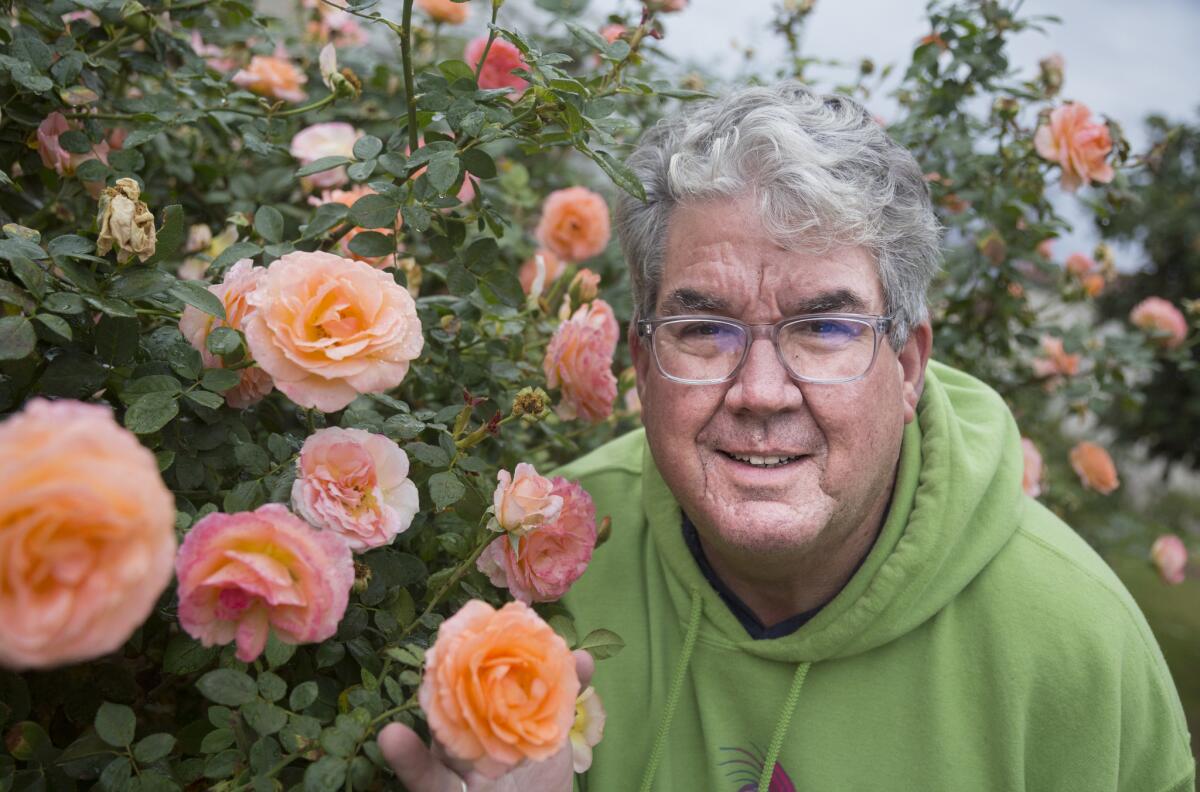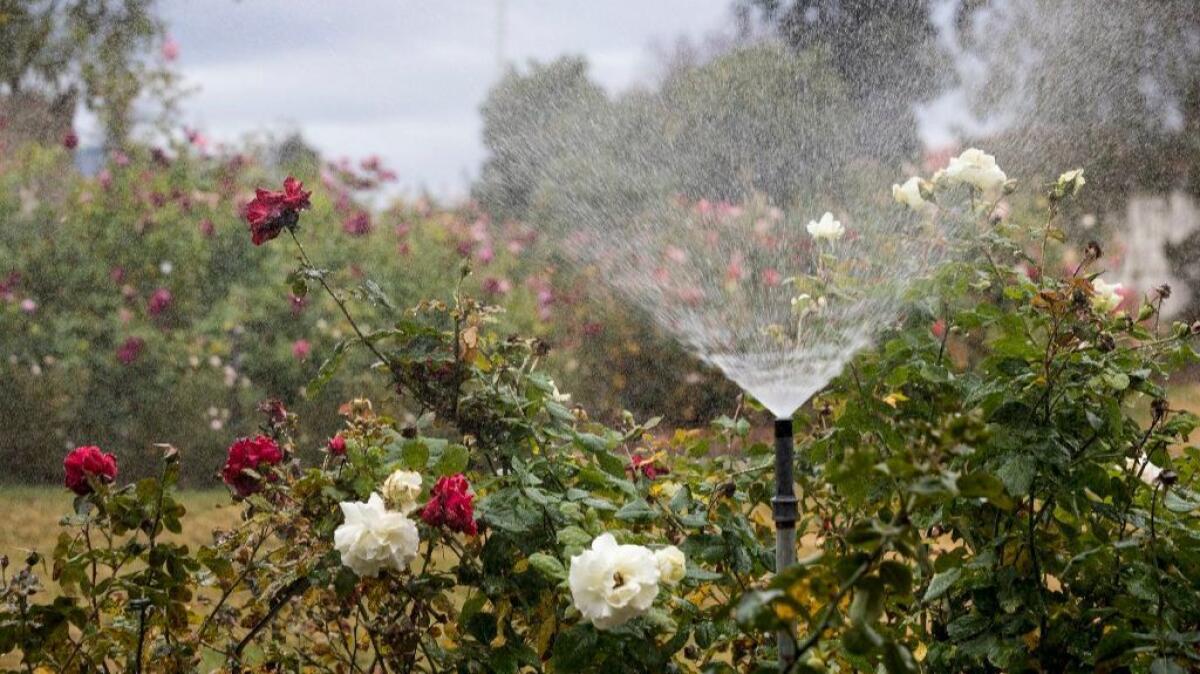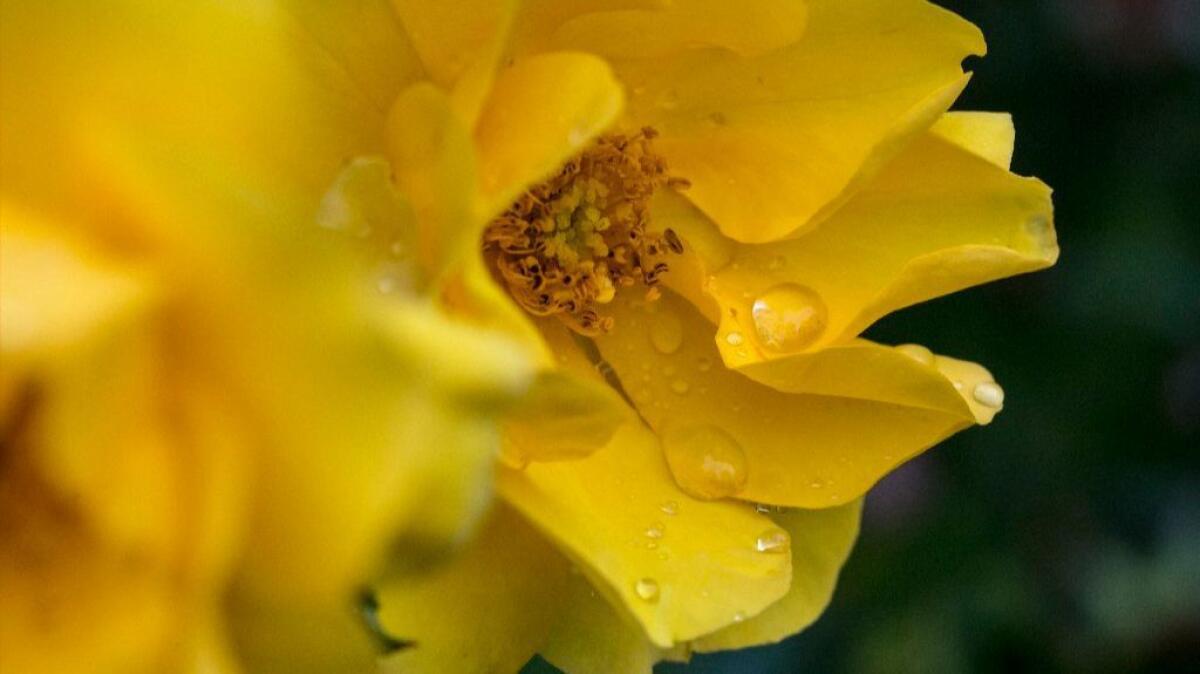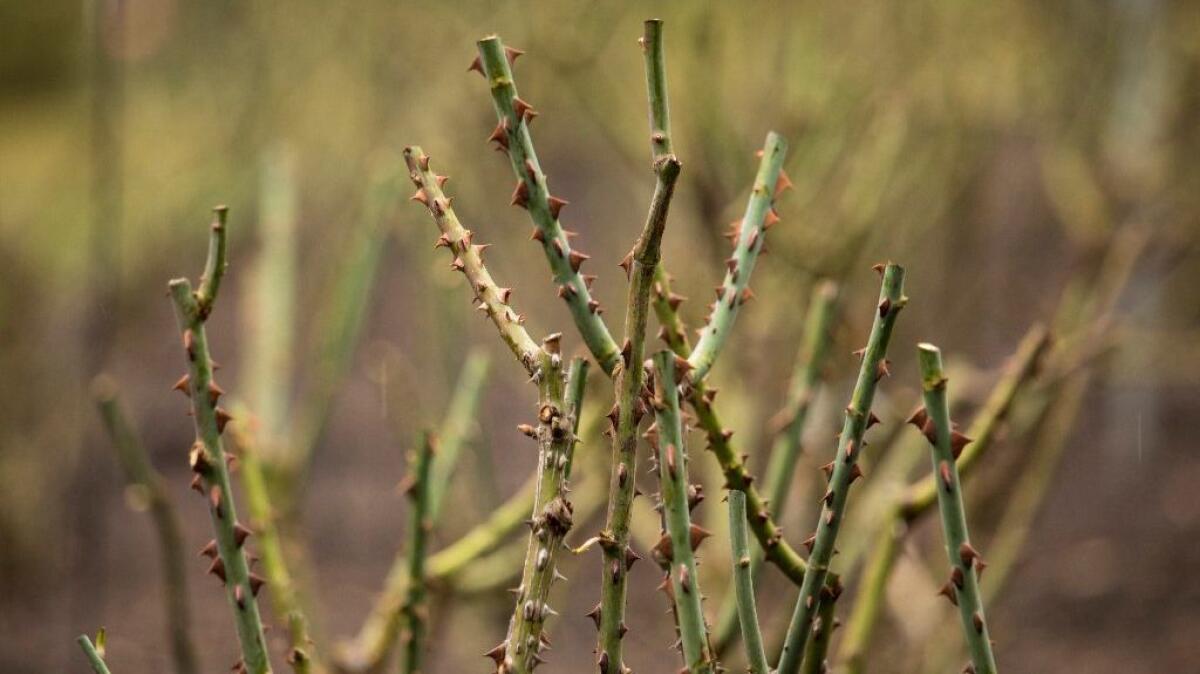Tending roses: How the drought is changing all the rules

- Share via
California’s drought has created new playbooks for landscaping and gardening in the Southland, and rose care is no exception.
We turned to Tom Carruth — rose curator at Huntington Library, Art Collections and Botanical Gardens in San Marino — for some advice and what to do now to ensure healthy blooms come spring and beyond. Carruth oversees the care of more than 2,500 rose bushes at the famous gardens. And he’s developed some surprising, rule-breaking hacks to keep the plants flourishing during our searing summers.
Roses are hardier than you’d think, even in a drought, Carruth said. But the long dry heat has introduced a nearly invisible, heat-loving predator called chilli thrips from South Central Asia.
Chilli thrips attack the tender growing tips of many plants, Carruth said, leaving branches that look stripped and burned and blossoms stunted and singed. “The adults are so small they can fly 60 feet in the wind currents,” he said, “and when we hit triple-digit temperatures, their numbers seem to explode.”
Desperate times required some experimental rule-breaking to save the Huntington’s — and your — roses. Here’s what you can do now:

Water from above
The old rule has been to water roses at their base, to reduce mildew and other diseases, but that’s more of an issue in wetter climes, Carruth said. The Huntington now uses sprinklers at least 3 feet high to water its roses in the early morning twice a week, for about 20 minutes. Deep, infrequent soakings help the roses develop strong roots, he said, and the overhead shower helps cool down the plants and wash off dust. Bonus point: “We haven’t had one problem with spider mites since we began.”

Get rid of the old mulch and bring lots of the new
It used to be that old mulch was covered by new, but in their quest to destroy predators, Huntington gardeners basically strip their rose beds clean every January — removing every leaf from the plants and raking up every speck of old mulch to eliminate any hiding places for pests and disease.
Be sure to apply 3 to 4 inches of new mulch, to discourage weeds and help keep the rose roots cool, Carruth said. The Huntington makes its own compost from acres of trimmings, but for home gardeners Carruth recommends wood bark, “the bigger the chunks the better.” Avoid mulches that contain pine, eucalyptus, palm or bamboo, he said. “If you notice those trees, things don’t like to grow under them.”

Go organic but be prepared to spray
The Huntington’s gardens have been organic for some time, but in his battle against chilli thrips, Carruth has bent his no-spray rule with spinosad, a natural insecticide made by a soil bacterium. Spinosad works, Carruth said, and is readily available under many brand names. But it’s also toxic to bees, he said, so the gardens only spray during the hottest months and late in the day when bees are less likely to be out.
The gardens are also experimenting with two organic soil treatments — a beneficial fungus called Beauveria bassiana and a beneficial nematode called Steinernema feltiae, Carruth said, but no verdict yet.
After the roses are pruned in January and new growth begins to emerge in February, Carruth feeds all the roses with Scott’s Natural Lawn Food, an organic granular lawn fertilizer. During the warm months, Huntington gardeners also spray their rose plants with organic liquid fertilizers every six weeks in the early morning. “We find it hardens the foliage and helps them withstand the drought conditions,” Carruth said.

The cannabis-rose connection
Gardeners can learn a lot from the hydroponic growing techniques developed by California’s cannabis growers, who use organic liquid fertilizers to safely and efficiently feed their plants, said Carruth.
The Huntington’s foliar spray for roses is a blend of liquid seaweed/kelp emulsion and a liquid fertilizer called Verde by Humboldt Nutrients, available online or at hydroponic stores or nurseries. The recipe is like making chili, Carruth joked. “The quantities can vary, but the ingredients all give you gas.”

For an easy way to follow the L.A. scene, bookmark L.A. at Homeand join us on our Facebook page for home design, Instagram, Twitter and Pinterest.
ALSO:
A whimsical, magical fairy tree brings smiles to an L.A. neighborhood
Photos: Ready to scratch the grass? Here are 27 inspiring lawn-free yards
No green thumb needed: 6 drought-tolerant herbs that are almost impossible to kill







